Tacos
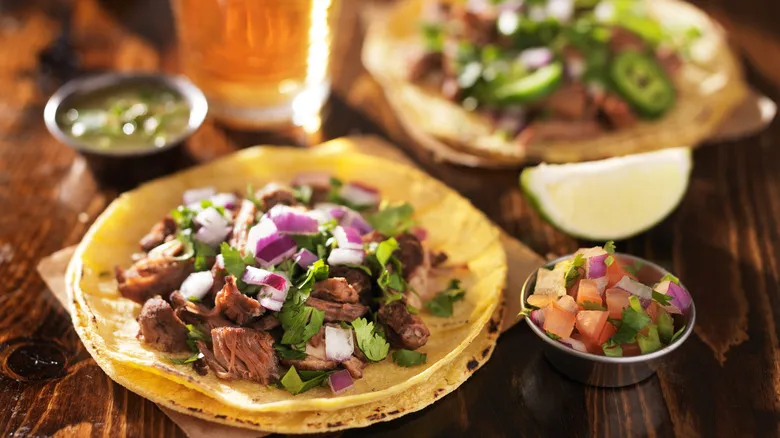
Some of the most popular Mexican beers, such as Corona and Modelo, are lagers, which explains why they are frequently enjoyed alongside tacos. However, it's not just their shared heritage that makes this pairing exceptional. Chris Gonzales, the director of brewery operations at Figueroa Mountain Brewing Company, explains, "A clean, crisp lager not only complements your choice of meat by cutting through the fat, but it also provides a refreshing contrast to spicy salsas with its dry finish." Additionally, certain Mexican beers incorporate flaked corn, which pairs nicely with corn tortillas.
While you can enjoy nearly any type of taco with lager, brewer Jacob Bauch from Puesto Cervecería suggests that Baja-style fish tacos and Mexican lagers create a perfect harmony. He points out that the beer-battered fish enhances the light maltiness and subtle sweetness of pale lager. Furthermore, the crunchy bitterness of the cabbage accentuates that sweetness, while the beer's carbonation helps to balance the rich tang of lime-infused crema. "They complement each other's intensity, with neither dominating the other, and each bite and sip encourages the next," he noted.
Fried foods
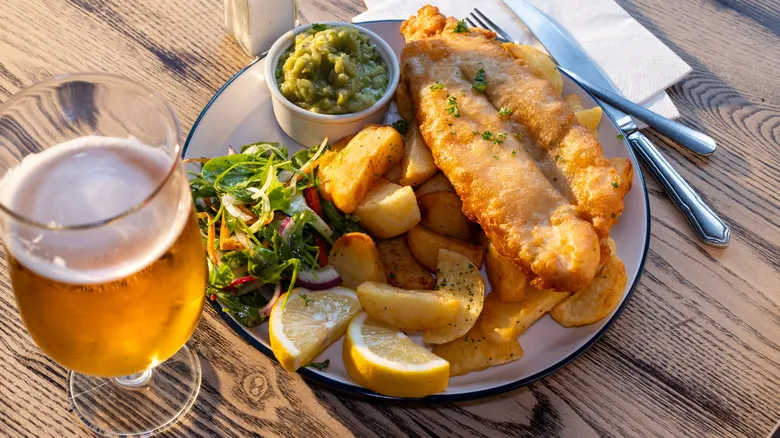
If you're craving fried food, many experts suggest that a crisp, light lager, such as a pilsner, is an ideal match. Matthew Gallagher, the executive chef at Yard House—a restaurant chain featuring over 100 beers on tap—often recommends pairing pale lagers with items like onion rings, fried cheese curds, and fish and chips due to the clean and straightforward finish these beers offer. He notes, "I prefer light lagers with more delicate flavors or fried dishes, especially since lagers are very refreshing."
Pilsners are particularly effective with fried foods because of their high carbonation. The bubbles in the beer help cut through the greasiness of battered items and enhance the crispy texture. Additionally, pale lagers have only subtle notes of malt and hops, ensuring they won't overshadow milder dishes like tempura, chicken tenders, or fish and chips. If your fried food has a bit of heat, Gallagher suggests opting for a dark lager, as the sweet malt flavors can complement bold tastes like smoky chiles and spices.
Soft pretzels

Lager boasts a rich history that traces back to 13th century Germany. The term "lager" translates to "to store" in German, reflecting the practice of Bavarian monks who would store beer in cool caves during fermentation. Given this background, it’s no surprise that lager pairs wonderfully with classic German cuisine. Chef Dennis Littley from Ask Chef Dennis strongly suggests enjoying lager alongside soft pretzels and mustard. His preferred choice for this pairing is a German-style helles lager.
In German, "helles" means "pale" or "bright," which perfectly describes the appearance of these beers. However, don’t be misled by the light golden hue. German helles lagers are generally more malty and full-bodied compared to lighter lagers like pilsners. The malt imparts a gentle sweetness, while the hops contribute a hint of bitterness, complementing the flavors of soft pretzels. Littley noted, "The slightly sweet malt of the helles balances the saltiness of the pretzel and the tang of the mustard. These elements work together because the lager enhances the dish without overpowering it, creating a harmonious pairing."
Sushi

When many people think of an alcoholic drink that complements sushi, sake is often the first option that comes to mind. However, Dennis Littley suggests that lager can be an unexpectedly great pairing as well. He explains, "The beer's mild bitterness offsets the richness of the fish, while the carbonation refreshes your palate between bites." Additionally, the subtle flavors of lager allow the fresh taste of the fish to stand out and can enhance the umami notes from the seaweed and soy sauce.
There are several types of lagers you might consider pairing with sushi. The most straightforward options are pale Japanese lagers like Asahi and Sapporo, both of which are light, crisp, and have a good level of carbonation. A bubbly pilsner can also effectively cut through richer fish cuts and rolls that include avocado or mayonnaise. Littley further recommends Vienna lager, which is usually amber in hue and features roasted malt that imparts slightly toasted and sweet flavors. These qualities can complement rich ingredients like barbecue eel and help balance the spiciness of rolls and wasabi.
Risotto
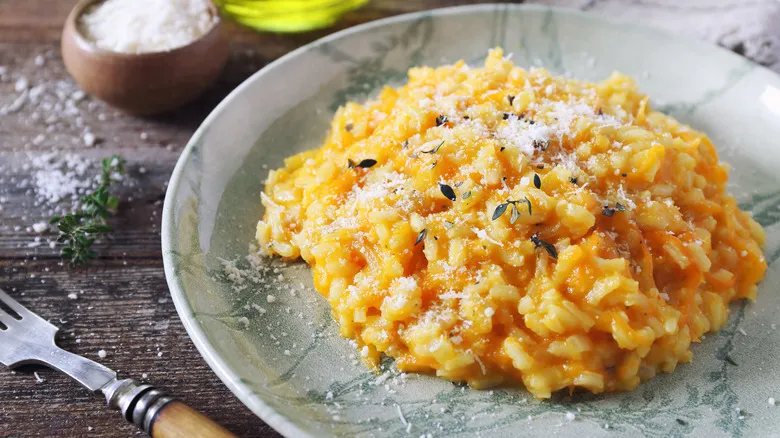
Indulgent and velvety meals such as risotto can greatly benefit from a refreshing lager sip between bites. Skip Schwartz, the head brewer at WeldWerks Brewing Company, shared that one effective approach he employs for food and beer pairings is to create contrast and balance by mixing opposing flavors. For instance, a crisp lager can effectively cut through the richness of creamy dishes. However, it's also crucial to match the intensity of the beer and food to ensure that neither element overshadows the other. He noted, "Lighter dishes should be complemented with lighter beers, while heartier foods can hold their own against more robust beers."
Since risottos are generally rich and brimming with umami from ingredients like Parmesan cheese or earthy mushrooms, opting for a fuller-bodied lager is advisable. Bohemian pilsners make an excellent choice due to their maltiness, which harmonizes beautifully with creamy dishes. Dennis Littley also suggests dunkel, a dark lager brewed with malt and roasted at low temperatures, imparting subtle bread-like flavors and a rich mouthfeel. Littley remarked, "The smooth texture of a dunkel elevates creamy or silky dishes like risottos or rich mushroom sauces."
American barbecue
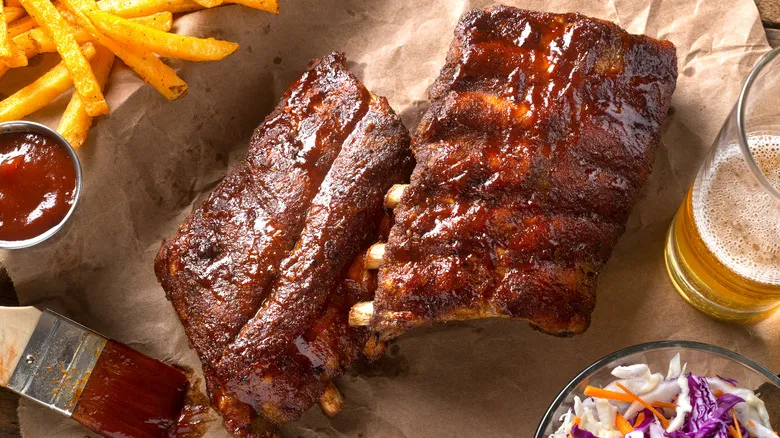
When we spoke with executive chef Kristopher Ludwig from Wolf's Ridge Brewing about regional foods that pair exceptionally well with lager, American barbecue topped his list. He remarked, "This type of beer is perfect for barbecue. The maltiness and roasted grain notes create an ideal combination." One of Ludwig's favorite lagers to enjoy with barbecued meats is a robust rauchbier. This German-style lager is crafted with malt roasted over open flames, imparting a smoky flavor that complements grilled and smoked meats beautifully.
Ludwig suggests not only enjoying a lager alongside your barbecue but also using it as an ingredient in your recipes. For instance, you can make a barbecue sauce infused with rauchbier to slather on smoked pork shoulder. After shredding the pork, drizzle some of that smoky sauce on top for a delicious enhancement to your pulled pork sandwich. He also recommends marinating chicken in a Vienna lager, grilling it, and then brushing or mopping the chicken with a Vienna lager barbecue sauce inspired by traditional Carolina barbecue.
Peking duck
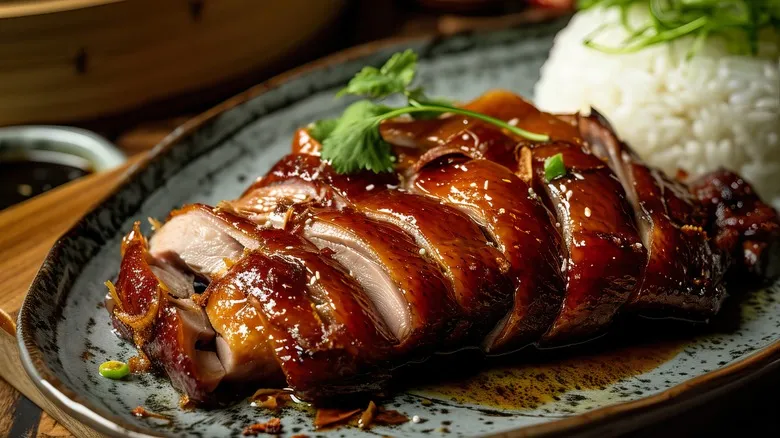
American barbecue isn't the only type of grilled meat that pairs well with lager. Skip Schwartz shared that Peking duck is another traditional dish that complements this beer beautifully. This iconic Chinese delicacy has its origins in the 1400s. The classic preparation involves inflating the duck's skin with air, coating it in a sweet and spicy syrup, and then hanging it in an oven to roast until the skin is crispy and the meat is tender. It is typically served with thin pancakes, hoisin sauce, cucumber sticks, and scallions.
Tsingtao, a Chinese pale lager, is an excellent choice to accompany Peking duck. Brewed with mineral water from Laoshan Mountain, it offers a light, crisp flavor and enough effervescence to cut through the richness of the meat. Additionally, the bitter hops in the finish balance the sweetness of the hoisin sauce. Schwartz also suggests trying a nice amber lager, noting, "The malty sweetness and caramel undertones of an amber lager enhance the rich, savory flavors of Peking duck, while its moderate carbonation refreshes the palate between bites."
Tiramisu

Lager might not be your go-to choice when seeking an after-dinner drink to accompany a rich and creamy dessert like tiramisu. With so many decadent dessert beers available, such as porters and stouts, that beautifully enhance the flavors of sweet mascarpone, coffee-soaked ladyfingers, cocoa, and a touch of liqueur, it’s easy to overlook lagers. However, Skip Schwartz suggests that you shouldn’t dismiss the idea of pairing lager with tiramisu until you’ve experienced it for yourself. He notes that a doppelbock-style lager pairs remarkably well with this classic Italian dessert.
Bock beers are dark German lagers known for their robust maltiness and toasted flavors. The term "doppel" translates to "double" in German, indicating that a doppelbock is a more potent version of a standard bock beer. You can anticipate rich nutty and chocolatey notes along with a full-bodied mouthfeel. Schwartz explains, "The rich, malty sweetness of a doppelbock enhances the creamy mascarpone in the tiramisu. The beer's hints of caramel, toffee, and dark fruit resonate with the dessert's coffee and chocolate nuances." In terms of flavor intensity, Schwartz believes they complement each other perfectly, with neither overpowering the other.
Steak
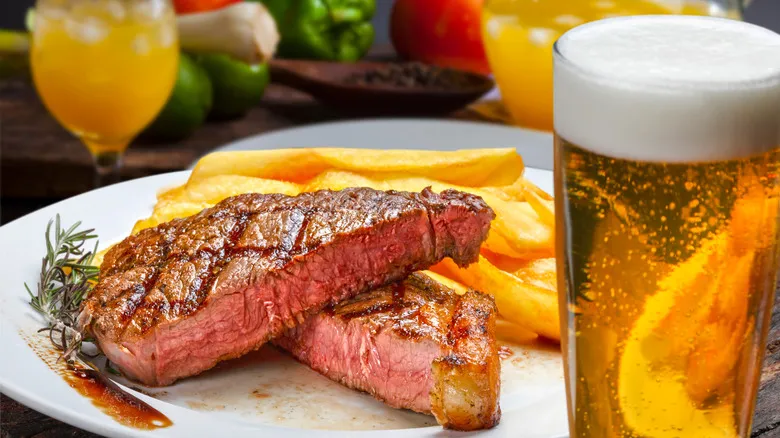
Red wine is traditionally paired with steak, but several experts we consulted suggested that lager can serve as a refreshing alternative. The crisp carbonation of lager can lighten the meal and enhance the rich, savory flavors of the meat. However, the type of steak and its cooking method can determine which lager style is most suitable. For instance, Ben Chambers, director of operations at BrewDog, noted, "A lean cut like filet mignon pairs better with the lighter notes of a lager, which helps to highlight the delicate flavors of the filet's seasoning."
If you're choosing fattier cuts such as ribeye or strip steak, a pilsner or another pale lager might be a better choice to balance the meat's richness. Jennifer Glanville, brewer at Samuel Adams and director of partnerships at The Boston Beer Company, favors an amber lager. She explained, "The prominent malt character complements the caramelized flavors of grilled or broiled steak, enhancing its natural richness, while the lager's subtle hoppy spice cuts through the meat's richness, creating a harmonious balance."
Pupusas
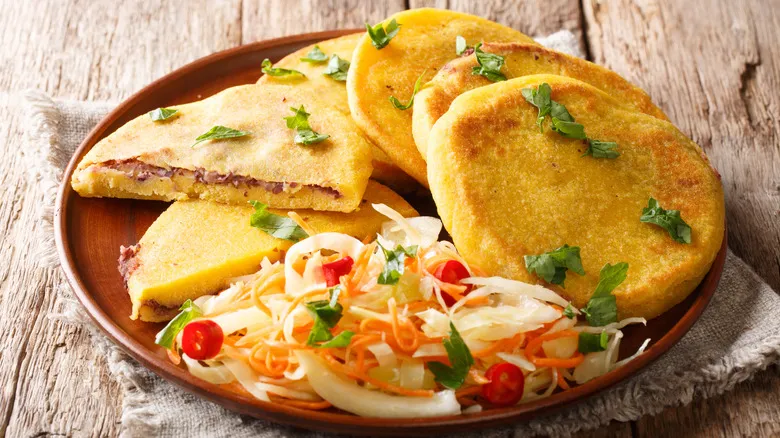
As someone with Salvadoran heritage, Chris Gonzales grew up enjoying pupusas, and he shared that they are especially delicious when accompanied by lager. Pupusas, the national dish of El Salvador, are made from masa dough (a mixture of corn flour and water) filled with various ingredients such as cheese, beans, and meat. The dough is shaped, stuffed, and cooked on a griddle until it turns golden brown. Typically, pupusas are served with curtido, a fermented cabbage slaw, and salsa roja, which adds a zesty and savory kick.
Amber lagers pair wonderfully with pupusas, as their roasted malt flavor and subtle sweetness complement the richer fillings like melted cheese and pork. Consider trying a Vienna lager or a German-style bock. Gonzales also mentioned, "Alternatively, if you opt for a pupusa with spicy fillings like jalapeños, a sharply bitter pilsner can enhance the heat." For an authentic Salvadoran experience, seek out Pilsener brand beer, one of the most popular choices in El Salvador, known for its crisp carbonation and smooth, dry finish, making it an excellent match for pupusas.
Chocolate
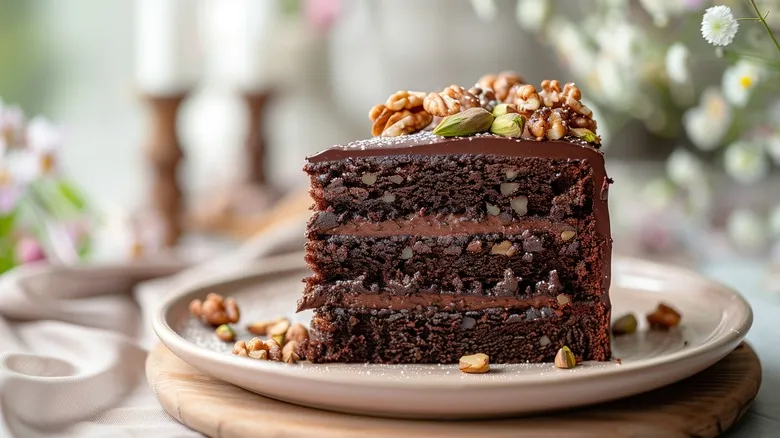
If you're in search of an exceptional food and lager combination, Jennifer Glanville strongly advocates for chocolate. She suggests pairing chocolate desserts with an amber lager or a malt-forward, hoppy lager. According to her, "The rich, malty notes and gentle bitterness perfectly enhance the intricate flavors of chocolate." Glanville also points out that the citrus undertones in the hops and chocolate can introduce an unexpected layer of balance. Additionally, she expressed her enthusiasm for beer floats made with malty lagers and chocolate ice cream.
When it comes to food and beer pairings, Glanville adheres to the three C's: complement, contrast, and cut. This approach can be applied in various ways with chocolate. For instance, the malt sweetness found in darker lagers like dunkels and doppelbocks can provide a contrast to the bitterness of dark chocolate while also enhancing the cocoa flavor. Chocolate desserts featuring nuts, caramel, or coffee can be elevated by toasty amber lagers that echo some of those flavors. For milk chocolate, a light lager such as a pilsner may be the best choice to balance the richness of the chocolate with a refreshing crispness and carbonation.
Seafood

Nothing beats an ice-cold lager on a sweltering summer day. And what could be a better summertime dish to enjoy with your beer than fresh seafood? As a New Englander and a respected brewer, Jennifer Glanville has had plenty of chances to explore various lager and seafood pairings. She shared with Chowhound, "For me, coastal dishes naturally pair beautifully with lagers like a helles or a pilsner." Pale lagers are light enough to be refreshing while still allowing the delicate sweetness of seafood to shine through. They also effectively balance the richness of oily fish such as sardines or mackerel.
If your seafood spread features roasted or grilled fish, an amber lager can introduce malty flavors that enhance the caramelized notes of the fish. Heartier seafood dishes like buttery lobster and seafood stew pair wonderfully with darker lagers like bocks and dunkels, as the subtle sweetness and smooth profile of the beer can elevate the indulgence of these meals. Glanville also suggests opting for lighter lagers with fried seafood dishes like crab fritters, as the lighter malt characteristics and vibrant nature of the lager can provide a delightful contrast to the richness of the fritters.
Mole negro
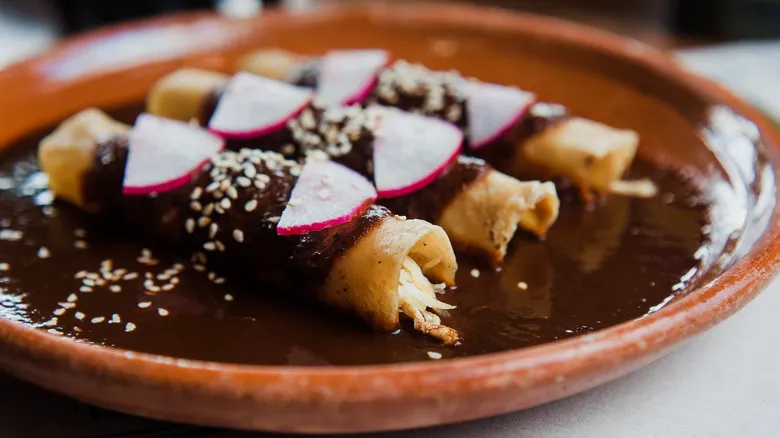
At Puesto Cervecería, brewers Jacob Bauch and Doug Hasker craft a variety of Mexican lagers that complement Mexican cuisine beautifully. Common pairings feature pale lagers with tacos and seafood, while amber lagers go well with carne asada and roasted vegetables. For a unique twist, Bauch suggests enjoying Oaxacan-style mole negro alongside a dark Mexican lager or another rich, toasty option like a dunkel or bock. He noted, "There’s a wonderful fusion of flavors that enhance each other on several levels."
Mole negro is a classic Mexican sauce made from over 20 ingredients, including dried chiles, toasted nuts, raisins, chocolate, and spices such as nutmeg and cloves. This sauce is typically served over meats like chicken or pork. Bauch pointed out that dark lagers share similar qualities with mole negro, such as nuttiness, toastiness, chocolate notes, and dark fruit flavors. He remarked, "The sweetness found in these dark lagers is essential to balance the spice blend and subtle heat of the dark mole." With this in mind, Bauch cautioned against pairing chicken mole with a dark lager that is overly bitter, roasty, and dry, like a schwarzbier.
Bratwurst
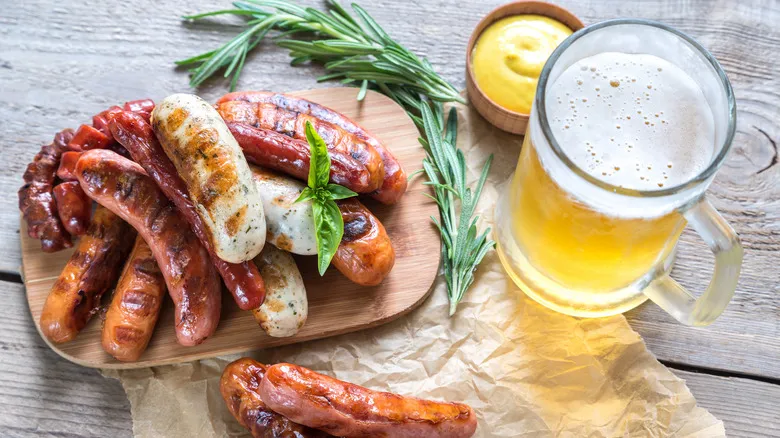
If you truly wish to celebrate tradition, Ben Chambers shared, "The classic pairing of traditional food and lager is the German festbier and märzen lagers alongside the types of dishes enjoyed at Oktoberfest." One staple you'll encounter at almost every Oktoberfest event is bratwurst. This iconic German sausage typically combines pork and veal, seasoned with spices such as nutmeg, ginger, and caraway. Bratwursts are commonly grilled and served with mustard and sides like potato salad, or they can be placed in a bun and topped with sauerkraut.
Chambers noted that festbier and märzen lagers complement rich and salty Oktoberfest dishes like bratwurst particularly well, as they tend to be slightly sweet and malty, with a higher alcohol by volume (ABV) than many other lagers. These qualities enhance the sweetness of the pork while balancing the sausage's fat content, resulting in a dry finish. Additionally, both lagers possess hoppy notes that contribute a spicy, floral element to the bratwurst's spices. As Chambers pointed out, the bratwurst also serves as "a solid foundation for endurance during the marathon of [Oktoberfest] beer drinking."
Recommended
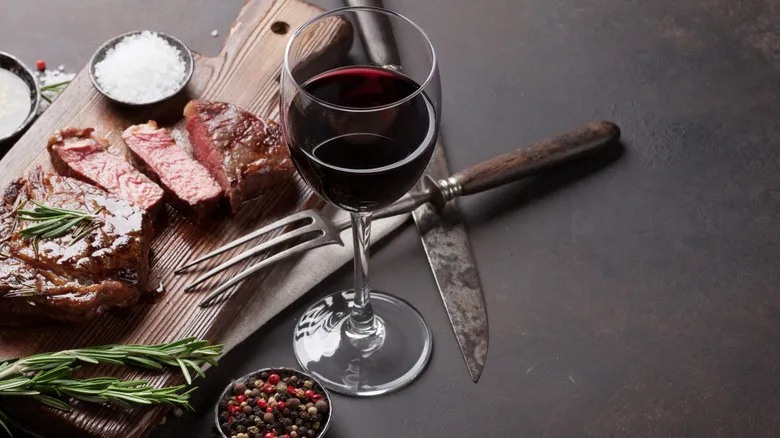
The Science Behind Why Beef And Red Wine Are A Perfect Pairing
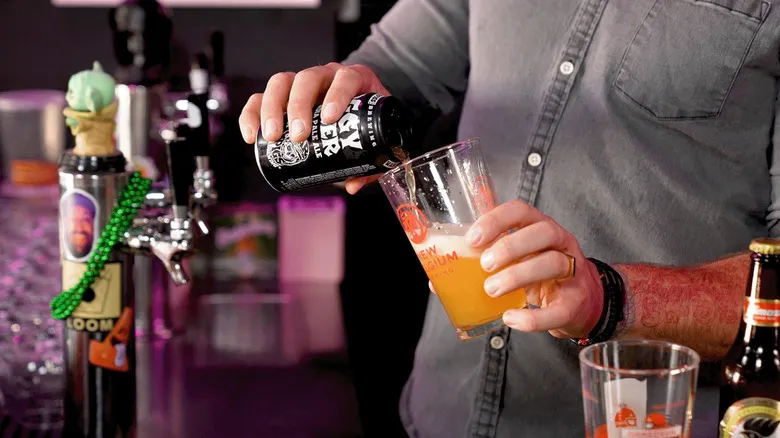
How To Pour A Beer - You're Doing It Wrong All Wrong
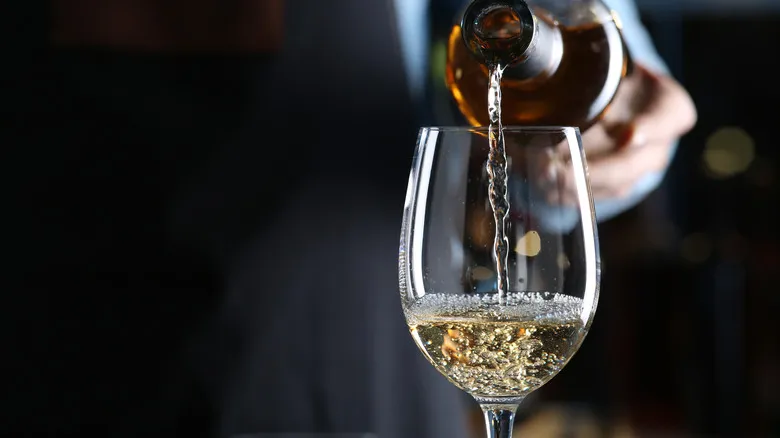
How Long Does White Wine Last In The Fridge Once Opened?
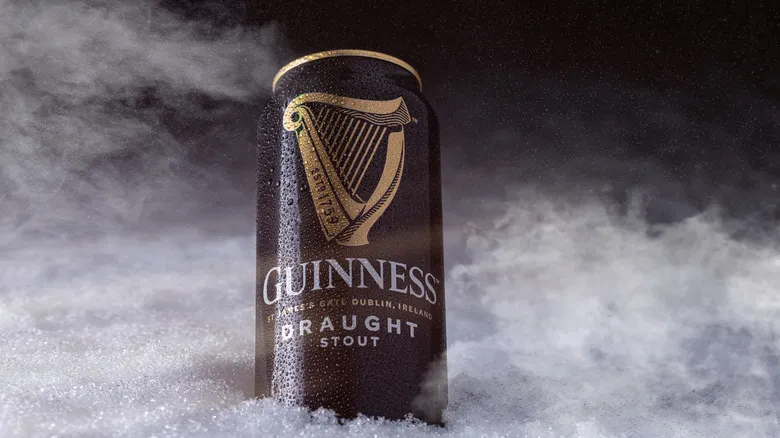
Should You Pour Your Canned Guinness Into A Glass?
Next up

